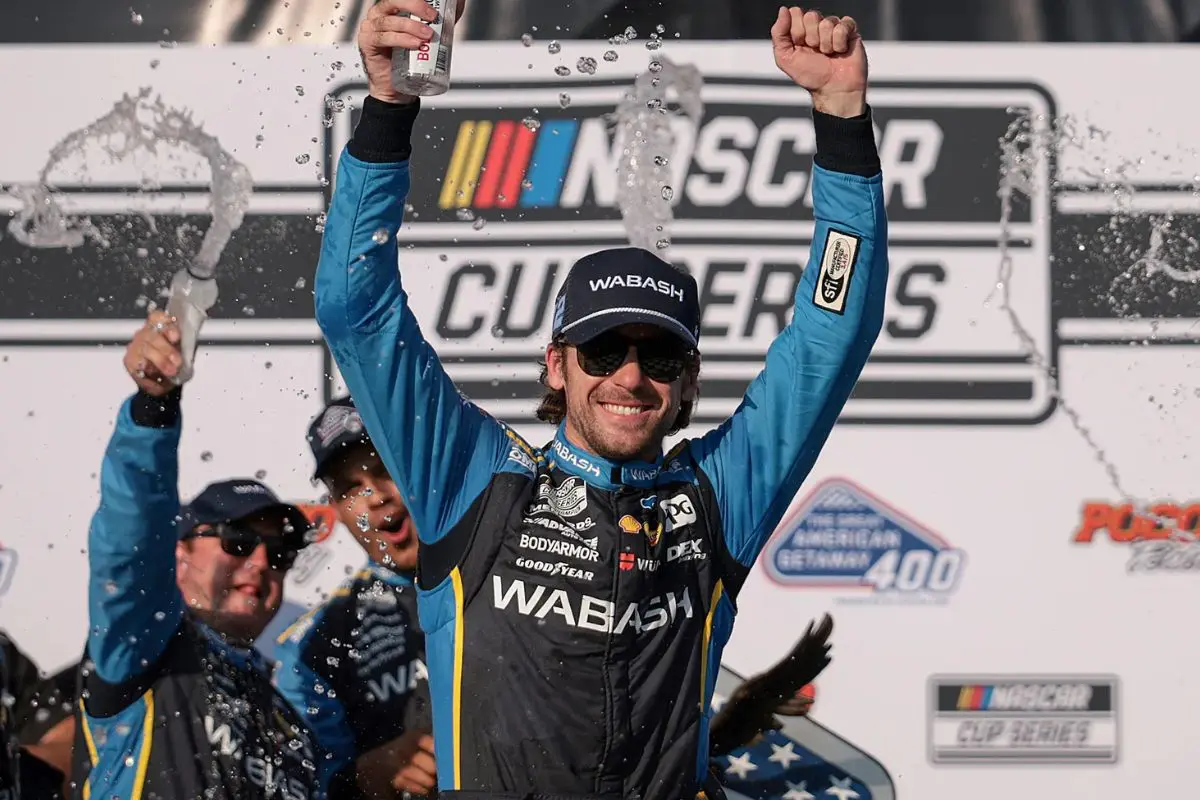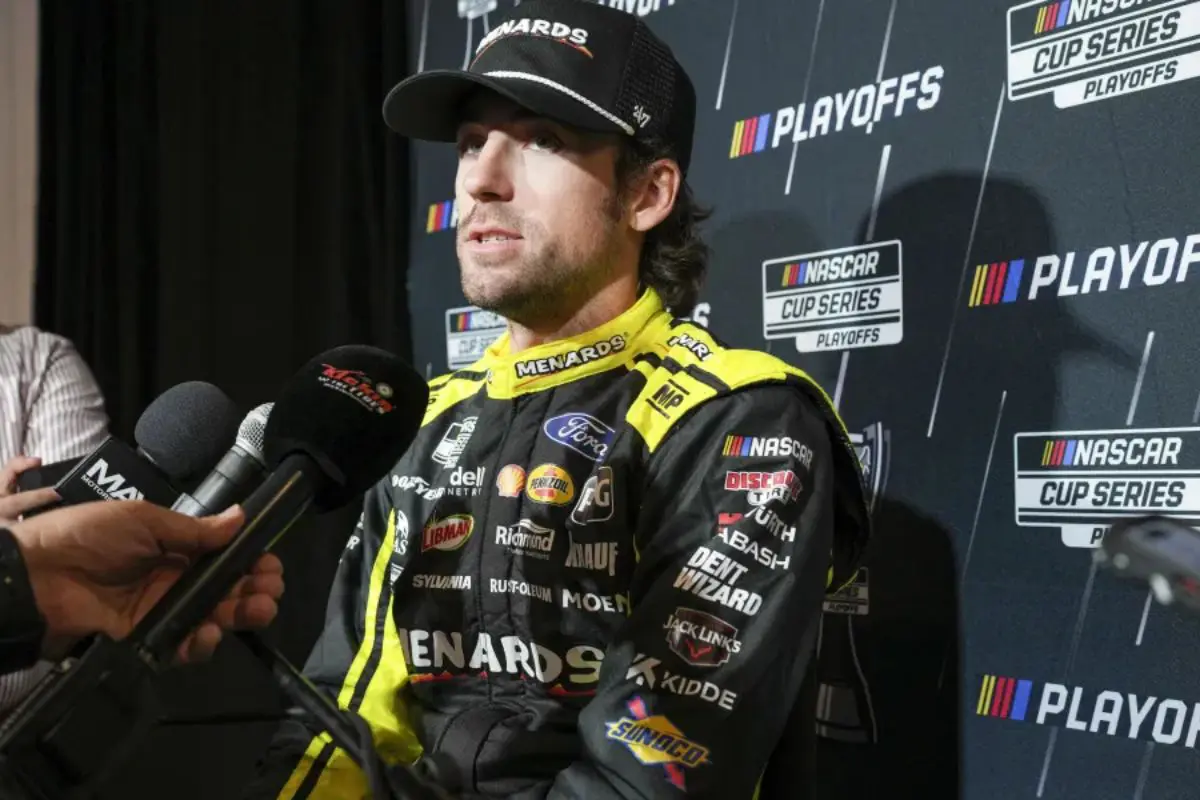Ryan Blaney’s Atlanta Near-Miracle Comeback: Ryan Blaney‘s remarkable performance at the Atlanta race serves as a case study in resilience and strategic insight, particularly following the noteworthy setback of a crash in Stage 3. Despite the adversity, Blaney’s ability to recalibrate his strategy and adapt to changing track conditions highlights a deeper narrative about the psychological and specialized demands of competitive racing. As he navigated his way back into contention, questions arises about the broader implications of such comebacks on a driver’s career path and the dynamics of race strategy. What does this mean for his future in the championship?
Key Highlights
- Ryan Blaney’s crash in Stage 3 could have ended his race, but he sustained only minor cosmetic damage, allowing him to continue competing.
- His confidence in car speed and strategic decision-making helped him maintain a position within the top 10 after the crash.
- Blaney’s collaboration with teammate Joey Logano during the race showed effective teamwork, contributing to both drivers’ competitive performance.
- Despite the chaotic race environment, Blaney demonstrated resilience and adaptability in response to evolving track conditions.
- His strong finish and 53 points solidified his status as a title contender, boosting his optimism for future races.
Ryan Blaney’s Performance and Role in the Race
Ryan Blaney’s performance in the Quaker State 400 was a show of his skill and insight as a driver, highlighted by his ability to lead the majority of Stage 1 before a caution disrupted the momentum. His adept handling of the car and acute awareness of track dynamics allowed him to maintain a calculated advantage, showing his expertise in maneuvering through the intricacies of Atlanta Motor Speedway’s revamped layout.
Blaney’s role in the race transcended mere leadership; it was a symbiotic relationship with his Team Penske teammate, Joey Logano. The evolution of the track into a draft-centric arena necessitated collaboration among drivers, and Blaney’s backing was essential in propelling Logano to the front. As they worked together, Blaney showed his individual talent and an understanding of team dynamics that is vital in NASCAR. His ability to draft effectively contributed to Logano’s eventual victory, emphasizing the importance of teamwork in a sport often perceived as an individual endeavor.
Moreover, Blaney’s resilience after the caution period reinforced his status as a formidable competitor. While the race concluded without him clinching the victory, his contributions in Stage 1 set the stage for Logano’s success.
This performance underlines Blaney’s ability to adapt and excel, marking him as a driver poised for continued success in the series. As the season unfolds, his calculated insight and teamwork will certainly be instrumental in his quest for further victories.
Ryan Blaney’s Comeback After the Crash
Following a strong display in the early stages of the race, Blaney faced a considerable challenge when a crash in Stage 3 threatened his competitive position. The incident, triggered by Chris Buescher’s loss of control, sent Blaney’s #12 car skidding across the track, leaving him in a precarious situation. However, the damage was minimal, allowing him to make a remarkable recovery.
Blaney’s resilience post-crash can be attributed to several factors:
- Lucky Angle of Impact: Blaney described the crash as fortunate, noting that he was hit at an angle that prevented a more severe spin or collision with the wall.
- Cosmetic Damage: The #12 car sustained only minor cosmetic damages, preserving its performance capabilities and allowing for a swift return to competitive racing.
- Maintaining Top 10 Position: Despite the setback, Blaney’s tactical driving kept him within the top 10, providing him the opportunity to capitalize on any late-race dynamics.
- Inherent Car Speed: Blaney expressed confidence in the car’s speed, stating that it still had the capability to navigate through the field effectively.
“I got super lucky; I got hit at an angle where I kinda just like eventually just straighten out. I didn’t spin or anything or sank in the wall. Yeah, I don’t know how much it hurted, it still felt fine.”
“I could get through the field and in the middle where I wanted to get. So, the car still had good speed.” – Blaney
Ryan Blaney on coming up a couple spots short after giving the push to Joey Logano and whether the crash damage impacted his car (and what he saw in the crash). pic.twitter.com/dYni5qjqUx
— Bob Pockrass (@bobpockrass) September 9, 2024
His post-crash performance exemplified not only his skill but also the tenacity of Team Penske. As Blaney navigated back into the fray, it highlighted his resolve and tactical skill, underscoring the unpredictable nature of racing where comebacks can materialize in the most unforeseen circumstances.
Daniel Suarez and Ross Chastain’s Performance
In the dynamic landscape of the Atlanta race, Daniel Suarez emerged as a formidable contender, highlighting his skill and tactical insight throughout the event. Partnered with teammate Ross Chastain, Suarez adeptly navigated through the pack, utilizing the aerodynamic advantage of the draft to maintain a competitive edge. Their synergy was evocative of the collaborative strategies often seen among top teams, allowing them to position themselves alongside the Team Penske drivers, who were also vying for supremacy.
However, the demands of race dynamics proved unforgiving; Chastain, in a moment of miscalculation, faltered amidst the intensity of the competition. This misstep allowed for an opportunity for Suarez to reclaim focus and control, illustrating the thin margins that define success in this high-stakes environment.
Yet, the interplay between Suarez and Chastain is representative of the intricate balance between teamwork and individual performance. While Suarez illustrated resilience and adaptability, Chastain’s slip highlights the unpredictable nature of racing—where even minor errors can greatly alter the course of a race.
Ryan Blaney’s Reflection on His Performance
The performance of Daniel Suarez and Ross Chastain set a competitive backdrop for Ryan Blaney’s own experience at the Atlanta race, where he navigated the challenges of the track with a blend of strategy and resilience.
Despite the tumultuous nature of the event, marked by several crashes, Blaney emerged with a notable performance that highlighted his ability to adapt and persevere. Reflecting on his race, he acknowledged the thin margins that defined his day, particularly his close calls in pursuit of the front row.
“I honestly thought I could get clear on 2 and then maybe have something down the back to get to Joey. I just didn’t quite get clear.”
“I know we had a really good day and like risk wrecking. So, I just figured we take the run home instead.” – Blaney
Blaney’s reflections reveal several key insights into his performance:
- Strategic Decision-Making: He opted for caution over aggression, prioritizing consistency and avoiding unnecessary risks that could have jeopardized his race.
- Adapting to Circumstances: Throughout the race, he illustrated an ability to recalibrate his strategy in response to the evolving track conditions and competitor dynamics.
- Resilience Under Stress: Blaney’s capacity to withstand the chaos around him, particularly as others faltered, highlights his mental fortitude and competitive spirit.
- Maximizing Points: He successfully capitalized on the race’s challenges, scoring 53 points, which not only solidified his position but also reinforced his status as a title contender.
Blaney’s Satisfaction and Future Outlook
Ryan Blaney expressed a deep sense of satisfaction with his performance at Atlanta, recognizing the collective effort that contributed to his comeback. His pride was evident as he highlighted the resilience displayed by his team in overcoming adversity, particularly following the damage sustained during the race.
“So, proud of the effort, proud of them sticking with it when we got a little bit of damage, fixing it and driving back to the field. So, yeah, really cool day,” concluded Blaney.
This sentiment emphasizes an important aspect of competitive racing: the synergy between driver and team. Blaney’s success was not merely a product of individual skill but rather a reflection of collaborative resolve and tactical adaptability.
Looking ahead, Blaney’s outlook appears optimistic. With the lessons learned from this race, he can refine his approach and capitalize on his team’s proven ability to respond to setbacks.
As the season progresses, Blaney’s newfound satisfaction may translate into stronger performances, making him a formidable contender in upcoming races.
News in Brief: Ryan Blaney’s Atlanta Near-Miracle Comeback
Ryan Blaney’s remarkable performance at Atlanta exemplified resilience and tactical insight in the face of adversity. The ability to recover from a considerable crash and still contend for a top position highlights a profound understanding of race dynamics and mental fortitude. This experience not only improves the competitive narrative surrounding Blaney but also positions him favorably for future challenges, reinforcing his status as a formidable contender in the championship landscape. Such attributes are crucial for success in motorsport environments.
ALSO READ: Ryan Blaney’s Crashed Car Finishes P3 at Atlanta: Fans Left Amazed




